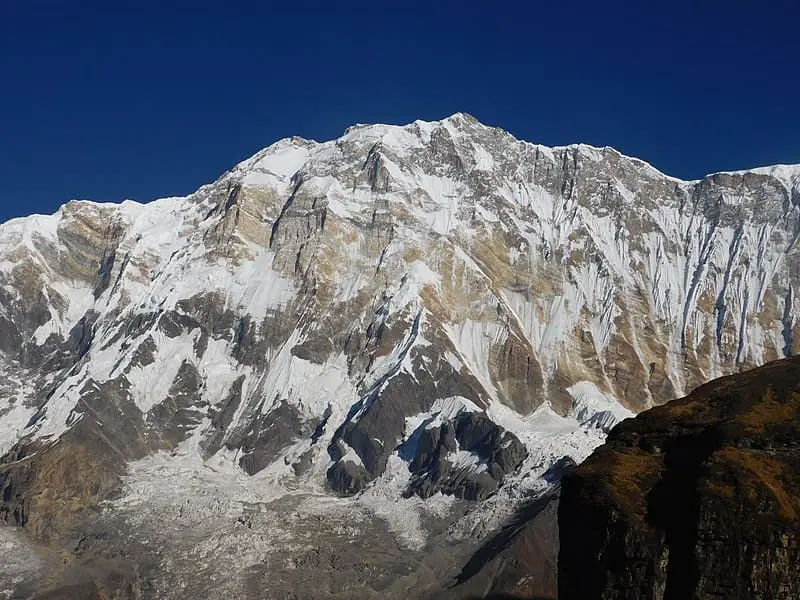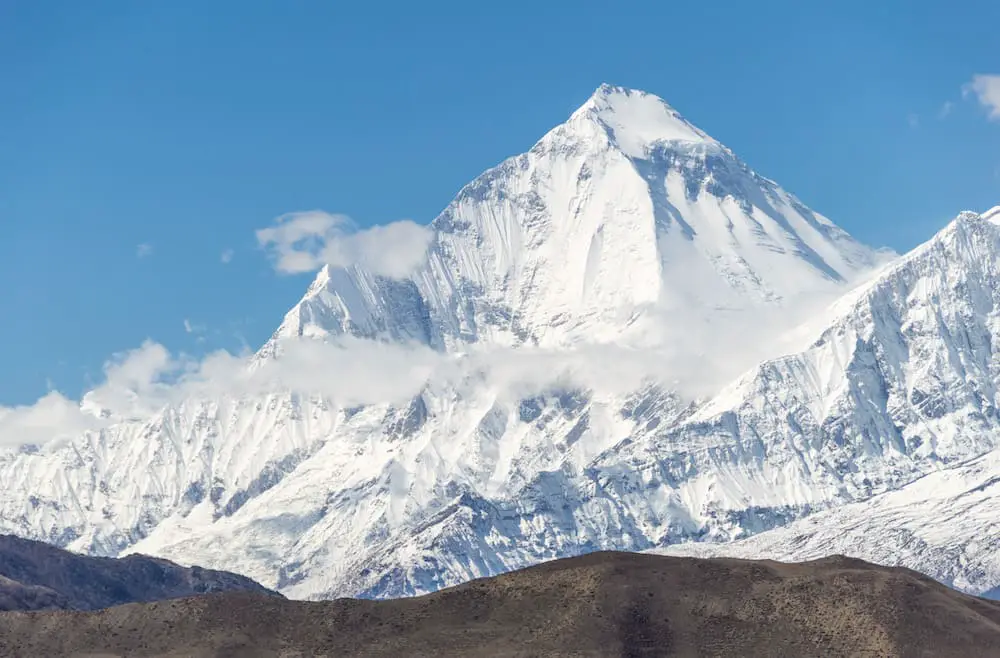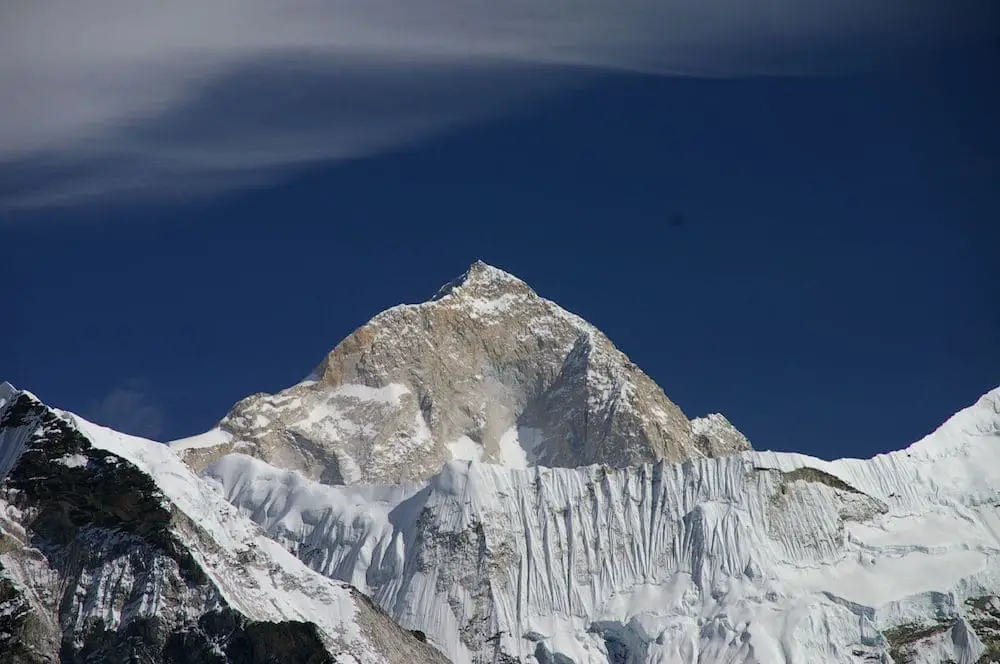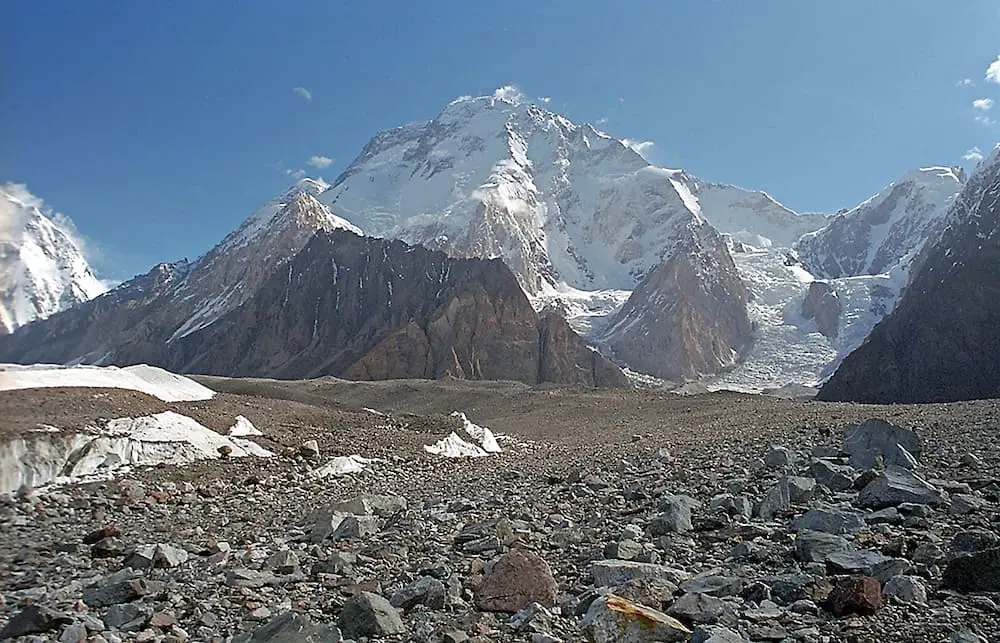Mountaineering is a thrilling and challenging adventure, but it can also be incredibly dangerous and deadly. Mountains worldwide, especially in the Himalayan range, are known for their extreme difficulty and high death tolls, making them some of the most deadliest mountains to climb in the world.
From the treacherous slopes of Annapurna in Nepal to the unpredictable weather of K2 in Pakistan, these peaks are not for the faint of heart. Each mountain has its unique hazards and challenges, and we will delve into the history and statistics of each one. Whether you’re an experienced mountaineer or just a curious onlooker, this list will give you a glimpse into the dangers and allure of climbing the world’s deadliest peaks.
Without further ado, let’s dive into the top 10 deadliest mountains to climb.
Quick Facts on The Deadliest Mountains to Climb
- Among the world’s mountains, the primary summit of the Annapurna massif stands out as the most perilous, boasting a fatality rate of 29% for those attempting its ascent.
- Historical data since 1900 reveal that out of an estimated 244 expeditions, 72 have tragically ended in fatalities.
- Following closely in terms of danger is Kangchenjunga, with a death rate of 29.1%.
- Mount Everest, Earth’s loftiest peak, allures numerous climbers annually, but it bears a significant risk with a 14.1% fatality rate.
The Most Dangerous Mountains To Climb:
- Annapurna I in Nepal – 29.50% fatality rate
- Kanchenjunga in India – 29.1% fatality rate
- K2 in Pakistan – 22.9% fatality rate
- Dhaulagiri I in Nepal – 21.9% fatality rate
- Nanga Parbat in Pakistan – 20.8% fatality rate
- Everest in Nepal – 14.1% fatality rate
- Makalu in Nepal – 13.6% fatality rate
- Gasherbrum I in Pakistan – 9.43% fatality rate
- Shishapangma in Tibet and China – 8.80% fatality rate
- Broad Peak in Pakistan – 8.37% fatality rate
1. Annapurna I:

Location: Nepal
Elevation: 8,091 meters
Death rate: 29.50%
First Summit: 1950
At 8,091 meters, Annapurna I is the tenth-highest mountain in the world. Located in the western part of Nepal, it is the most dangerous and deadly mountain in the world, taking the lives of over 60 climbers giving it a roughly 30% fatality to ascent rate.
The first successful ascent of Annapurna I was made in 1950 by a French expedition. Many expert climbers consider Annapurna one of the world’s most difficult mountains to climb. It is often considered a death wish to try and summit the mountain.
Climbers say that certain sections of Annapurna are more difficult and technical to climb than K2 and Everest. For example, the mountain’s south face is considered one of the world’s most difficult and technical climbs. One of the reasons is that the mountain remains cold and covered with snow throughout the year, and on top of that, it receives high-velocity winds and snowfall. Additionally, Annapurna is full of seracs, crevasses, and sharp ridges and is often susceptible to avalanches.
Annapurna I is home to one of Nepal’s most deadly mountaineering accidents. On 14 October 2014, 43 people died on the Annapurna Circuit. The trekkers were caught in a snowstorm that ended up being their demise. To learn more about what happened that day, check out my blog: Death on the Annapurna Circuit.
2. Kangchenjunga:

Location: Nepal
Elevation: 8,586 meters
Death rate: 29.1%
First Summit: 1955
Kangchenjunga, located in the eastern Himalayas on the border of Nepal and India, with an elevation of 8,586 meters, is the third-highest mountain in the world. The first successful ascent was made in 1955, but since then, it has claimed the lives of over 30 climbers. Despite technological advances that have helped increase safety on other fearsome peaks, Kanchenjunga remains deadly, with fatality rates hovering around 29%. While the world’s other deadliest mountains have become statistically safer over the years, deaths on Kanchenjunga have increased over the years.
With the mountain being one of the most hazardous environments on earth, thanks to its shifting weather conditions, avalanches, rock falls, and treacherous elements, Kangchenjunga, remains feared by many climbers.
Not only is the environment difficult, but Kangchenjunga is also known for its dangerous terrain. With intricate mixed climbing at first and later involving one of the longest horizontal climbs above 8,000 meters, the demanding mountain requires well-planned logistics and a strong support team. The most common causes of mortality on Kanchenjunga include hypothermia, falling, avalanches, suffocation due to oxygen deprivation, illnesses, and rock falls.
3. K2:

Location: Pakistan
Elevation: 8,611 meters
Death rate: 22.9%
First Summit: 1954
K2, located on the border of Pakistan and China, is the second-highest mountain in the world, with an elevation of 8,611 meters, about 230 meters shorter than Everest, and has a death-to-ascent ratio of about 23%. The first successful ascent of K2 was made in 1954, but since then, it has claimed the lives of over 80 climbers. The worst accident occurred in 2008, when inadequate planning, poor communication, and unfavorable weather conditions led to the death of 11 climbers in 24 hours – you can read more about the event in my 2008 K2 Disaster blog.
K2 is so dangerous because the routes are not well laid out, as not many people feel up to the challenge of this foreboding mountain. Additionally, the mountain is shaped like a triangle, meaning the climbers face steep climbs from day one, regardless of their chosen route.
This climb is extremely technical, with mixed rock, ice, and alpine climbing the whole way up. During the difficult ascent, climbers have to face the bottleneck, a crossing below a vast hanging glacier, which is the most treacherous part of the climb, which consists of wild weather-shifting ice pillars and avalanches that may strike at any time.
4. Dhaulagiri I:

Location: Nepal
Elevation: 8,167 meters
Death rate: 21.9%
First Summit: 1960
Dhaulagiri I is located in the western part of Nepal and is the seventh-highest mountain in the world, with an elevation of 8,167 meters. The first successful ascent of Dhaulagiri I was made in 1960 by two Sherpas with Austrian and Swiss Mountaineers and was one of the last 8000ers to be summited. However, since then, it has claimed the lives of over 30 climbers, resulting in a death-to-ascent rate of almost 22%.
The mountain is so treacherous that many climbers say it has a habit of making the most experienced climbers disappear. Not only is Dhaulagiri I one of the most dangerous, but it also has routes that have never been climbed. No climbers have been able to climb the mountain’s South face as it is thought to be a suicidal ascent by experts. Like most gigantic peaks, the danger of unexpected and frequent avalanches poses the greatest threat to climbers.
5. Nanga Parbat:

Location: Pakistan
Elevation: 8,126 meters
Death rate: 20.8%
First Summit: 1953
Nanga Parbat, located in the western Himalayas in Pakistan, is the ninth-highest mountain in the world, with an elevation of 8,126 meters. The first successful ascent of Nanga Parbat was made in 1953, but since then, it has claimed the lives of over 60 climbers.
With about a 21% fatality rate, the mountain has earned its nickname ‘Maneater’ or ‘Killer Mountain.’ The mountain is so dangerous because of its notoriously treacherous routes and high risks of avalanches, rockfall, and deadly crevasses. Additionally, the mountain has one of the biggest elevation gains between the base camp and the summit, making it an exhausting mountain to summit.
The majority of deaths that have occurred on the mountain came before the first summit in 1953 by Hermann Buhl. With the previous 31 attempts ending in death, Buhl laughed in the face of danger and decided to summit the mountain without an ice ax or oxygen!
6. Everest:

Location: Nepal
Elevation: 8,848 meters
Death rate: 14.1%
First Summit: 1953
Mount Everest, located on the border of Nepal and Tibet, is the highest mountain in the world, with an elevation of 8,848 meters. While it is one of the most iconic and sought-after peaks to climb, it also comes in as the sixth deadliest, holding about a 14% death-to-ascent ratio.
The first successful ascent of Everest was made in 1953, but since then, it has claimed the lives of over 300 climbers. The mountain’s extreme altitude, which can cause altitude sickness, its severe and unpredictable weather, and the overcrowdedness generating high traffic, can make climbing conditions extremely treacherous.
The heavy traffic on the mountain during the climbing season, with hundreds of climbers attempting to reach the summit, has recently led to an increase in deaths in the death zone! With so many deaths happening in one area, climbers have given it the nickname rainbow valley. Rainbow valley on Mount Everest got its name from the frozen bodies that remain on the mountainside in their colorful suits.
7. Makalu:

Location: Nepal
Elevation: 8,485 meters
Death rate: 13.6%
First Summit: 1955
Makalu, located in the Mahalangur range of the eastern Himalayas, is the fifth-highest mountain in the world, with an elevation of 8,485 meters. The first successful ascent was made in 1955, but since then, it has claimed the lives of over 30 climbers giving it a death-to-ascent rate of about 14%.
The mountain has a reputation for having some of the most technical routes in the world, requiring advanced climbing skills and experience. Another reason the mountain is so deadly is the path to Makalu is a lengthy journey fraught with danger, requiring the climbers to expend significant energy before even reaching base camp.
Similar to k2, many fatalities occur while climbers descend the mountain. Getting safely down from the peak is difficult as the summit has the shape of a steep four-sided pyramid that features near-constant storms.
8. Gasherbrum I:

Location: Pakistan
Elevation: 8,080 meters
Death rate: 9.43%
First Summit: 1958
Gasherbrum I, also known as Hidden Peak or K5, is located in the Karakoram range of Pakistan and is the 11th-highest mountain in the world, with an elevation of 8,080 meters. The first successful ascent of Gasherbrum I was made in 1958 by an eight-man American team with a pair of climbers, Pete Schoening and Andy Kauffman using mirrors to communicate successfully with the rest of the expedition at the base camp.
But since the first ascent, the mountain has claimed the lives of over 30 climbers, with only 200 individuals reaching the summit. With roughly a 10% fatality rate, Gasherbrum is a mountain that only the most skilled mountaineers consider climbing. Nestled among a six-pack of peaks is defined by its steep and slippery slopes surrounded by vertical seracs – making falls and slips a common way to die on the mountain.
9. Shishapangma:

Location: China (Tibet)
Elevation: 8,013 meters
Death rate: 8.80%
First Summit: 1964
Shishapangma, also known as Xixabangma, is located in the Himalayas on the border of Tibet and China. It is the 14th-highest mountain in the world, with an elevation of 8,013 meters. The first successful ascent of Shishapangma was made in 1964 by a Chinese team, making it the last 8,000er to be climbed.
The mountain has a fatality rate of almost 9%, even though it is labeled as one of the less challenging climbs. However, the mountain has claimed over 20 lives with only around 270 successful summits due to it being so isolated and helicopter resources not being available. Most deaths result from falls, but weather and altitude have also resulted in fatalities. Finally, the terrain from the central summit to the main summit requires climbers to traverse a dangerous knife-edge ridge to reach it.
Although dangerous, Ueli Steck reached the 8,013-meter peak in an astoundingly quick 10-and-a-half-hour climb.
10. Broad Peak:

Location: Pakistan
Elevation: 8,051 meters
Death rate: 8.37%
First Summit: 1957
Broad Peak is located in the Karakoram range of Pakistan and is the 12th-highest mountain in the world, with an elevation of 8,051 meters. The first successful ascent of Broad Peak was made in 1957, but since then, it has claimed the lives of over 20 climbers.
The mountain acquired its name due to the mile-long Ridge around the summit. Broad Peak is a challenging climb, starting steep and never stopping until the summit. Steep icy slopes and lack of well-defined routes make summit pushes deadly.
The challenging climb is one reason why Broad Peak is one of the most deadliest mountains to climb. Another reason why is that the number of climbers that has summited the mountain is low. This is because many climbers reach the false fore-summit around an hour short of the true summit, meaning that many never reach the true summit.
FAQs: Deadliest Mountains to Climb
Below are the most frequently asked questions regarding the most dangerous and deadliest mountains to climb in the world.
Annapurna is more deadly than K2. Annapurna I, the tenth-highest mountain in the world, has a fatality rate of 29.5%, compared to K2’s fatality rate of 22.9%.
Yes, K2 is deadlier than Everest. K2 has a fatality rate of 22.9%, while Everest has a 14.1% fatality rate.
Annapurna is dangerous because it is home to some of the world’s most difficult and technical climbs. Additionally, the unpredictable climate and treacherous terrain make it one of the deadliest mountains to climb. High-velocity winds, snowfall, and avalanches are common hazards, and the mountain’s secluded location makes it difficult to get help in emergencies.
On the scale of difficulty and technical climbs, Annapurna I is considered to be deadlier and more dangerous than Everest. Annapurna has a 29.5% fatality rate making it the most deadly mountain in the world. While Everest has a 14.1% fatality rate, making it the sixth most deadly mountain.
Most people on Everest die from a lack of oxygen and other altitude-related conditions. Overhead hazards like avalanches, icefall, and rockfall have also led to many deaths on Mt. Everest.
A total of three people died on Everest in 2022. The three climbers that died were Pavel Kostrikin, age 55, on March 7; Ngimi Tenji Sherpa, age 38, on April 14; Dipak Mahat, age 32, on May 12.
1) Annapurna I
2) Kanchenjunga
3) K2
4) Dhaulagiri I
5) Nanga Parbat
6) Everest
7) Makalu
8) Gasherbrum I
9) Shishapangma
10) Broad Peak
